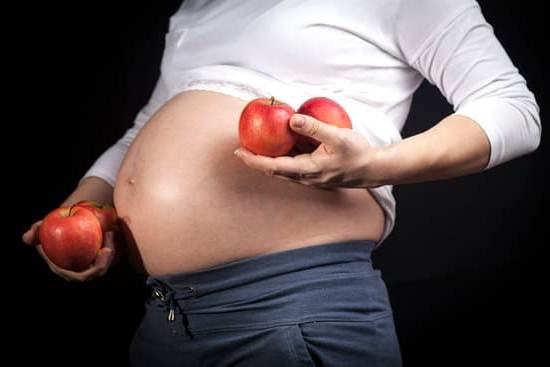Pregnancy is a crucial time for both the mother and the developing fetus, and proper nutrition is essential for a healthy outcome. For some pregnant women who cannot tolerate enteral feeding, peripheral parenteral nutrition (PPN) becomes a vital option to ensure adequate nutrient intake. This article aims to provide an overview of PPN in pregnancy, including its benefits, risks, process of administration, and alternative options for those who may not be able to tolerate enteral feeding.
Peripheral Parenteral Nutrition (PPN) provides essential nutrients through an intravenous route, bypassing the gastrointestinal tract. In pregnancy, PPN can be a valuable option for women with conditions such as hyperemesis gravidarum or gastrointestinal disorders that prevent them from receiving adequate nutrition through oral intake. Understanding the benefits and drawbacks of PPN can help healthcare providers make informed decisions about the best nutritional support for pregnant women in need.
In this article, we will delve into the benefits of using PPN during pregnancy, the associated risks and complications, how it supports maternal and fetal health, the process of administering PPN during pregnancy, as well as important considerations and precautions. Additionally, we will explore case studies and success stories of pregnant women who have utilized PPN when facing challenges with enteral feeding.
Moreover, we will discuss alternative nutritional options available for pregnant women who may not tolerate enteral feeding to ensure all aspects are covered when making informed decisions about maternal and fetal health during pregnancy.
Benefits of Using Peripheral Parenteral Nutrition During Pregnancy
Peripheral parenteral nutrition (PPN) is a crucial option for pregnant women who may have difficulties with enteral feeding or require additional nutritional support. The benefits of using PPN during pregnancy are significant, especially for women who are unable to consume adequate nutrients orally or through tube feeding.
One of the primary benefits of PPN during pregnancy is the ability to provide essential nutrients directly to the bloodstream, bypassing the digestive system. This is particularly important for women experiencing conditions such as hyperemesis gravidarum, gastrointestinal disorders, severe nausea and vomiting, or those undergoing cancer treatment during pregnancy. PPN can help ensure that both the mother and fetus receive the necessary vitamins, minerals, and macronutrients for healthy growth and development.
Furthermore, PPN can also reduce the risk of malnutrition in pregnant women who may not be able to meet their nutritional needs through oral intake alone. By delivering nutrients intravenously, healthcare providers can more effectively control and monitor the intake of essential substances, which is crucial for maternal health and fetal development. Additionally, PPN can alleviate some of the stress associated with trying to eat when experiencing severe nausea or other complications that affect oral intake during pregnancy.
Overall, the benefits of using PPN during pregnancy are clear – it provides a viable option for women who cannot tolerate enteral feeding or need additional nutritional support to promote a healthy pregnancy and fetal development. However, it is important to consider potential risks and complications associated with this method of nutrition delivery as well.
Risks and Complications Associated With Peripheral Parenteral Nutrition in Pregnancy
Peripheral Parenteral Nutrition, or PPN, is a method of delivering nutrition to pregnant women who are unable to tolerate enteral feeding. While PPN can be beneficial in providing essential nutrients to both the mother and fetus, there are risks and potential complications associated with this method. It is important for healthcare providers and pregnant women to be aware of these risks in order to make informed decisions about using PPN during pregnancy.
Potential Risks of Peripheral Parenteral Nutrition
One of the main risks associated with PPN in pregnancy is the potential for infection at the site where the catheter is inserted. This can lead to serious complications such as sepsis, which can be life-threatening for both the mother and fetus. Additionally, there is a risk of catheter-related thrombosis, which can lead to blood clots that may travel to vital organs.
Complications Associated With Peripheral Parenteral Nutrition
Another important consideration when using PPN during pregnancy is the potential for metabolic complications. These may include electrolyte imbalances, hyperglycemia, and essential fatty acid deficiencies. These complications can have negative effects on both the mother’s health and fetal development.
It’s crucial for healthcare providers to closely monitor pregnant women receiving PPN in order to promptly identify and address any potential complications that may arise. Close monitoring can help mitigate these risks and ensure the safety of both the mother and fetus during this critical time.
How Peripheral Parenteral Nutrition Supports Maternal and Fetal Health
Proper Nutrient Intake
Pregnancy can place significant demands on a woman’s body, requiring increased nutrient intake to support fetal growth and development. PPN helps ensure that pregnant women receive essential nutrients such as vitamins, minerals, and amino acids, even when they are unable to tolerate oral or enteral feeding. This can be especially important for women who experience complications during pregnancy that affect their ability to eat normally.
Prevention of Malnutrition
PPN plays a key role in preventing malnutrition in pregnant women who may be at risk due to conditions such as hyperemesis gravidarum, severe morning sickness, or other gastrointestinal issues. By providing a direct route for essential nutrients to enter the bloodstream, PPN can help maintain the mother’s nutritional status and prevent deficiencies that could impact both her health and the development of the fetus.
Fetal Growth and Development
The nutritional support provided by PPN directly contributes to fetal growth and development, ensuring that the baby receives adequate nourishment even when the mother faces challenges with oral intake. This can be particularly important in cases where maternal health issues or complications necessitate prolonged use of PPN.
By supporting fetal growth and development, PPN helps contribute to healthier outcomes for both mother and baby. Overall, PPN offers vital support for maternal and fetal health during pregnancy when traditional forms of nutrition are not feasible.
The Process of Administering Peripheral Parenteral Nutrition During Pregnancy
Peripheral parenteral nutrition (PPN) is a method of delivering essential nutrients to pregnant women who are unable to consume an adequate diet orally or through enteral feeding. The process involves the administration of a solution containing vital nutrients directly into a peripheral vein using a catheter. Here is an overview of the process of administering peripheral parenteral nutrition during pregnancy:
1. Initial Assessment: Before starting PPN, pregnant women will undergo a thorough assessment by healthcare professionals to determine the appropriate nutritional requirements based on their individual needs and specific health conditions.
2. Insertion of Catheter: A thin, flexible catheter is inserted into a peripheral vein, typically in the arm, and secured in place to ensure proper delivery of the nutrient solution. This can be done in a hospital setting or under the care of a trained healthcare provider.
3. Nutrient Solution Preparation: The nutrient solution is specially formulated by a pharmacist or healthcare professional to meet the specific nutritional needs of the pregnant woman and her developing fetus. It may contain vitamins, minerals, electrolytes, glucose, and other essential components for maternal and fetal health.
4. Monitoring and Adjustment: Once the PPN is initiated, close monitoring is necessary to assess its effectiveness and make adjustments as needed. Healthcare providers will regularly evaluate the patient’s nutritional status and make any necessary modifications to the PPN prescription.
5. Education and Support: Pregnant women receiving PPN require education and support from healthcare professionals to understand the process, potential complications, and how to care for the catheter site. They also need guidance on maintaining proper hygiene practices to reduce the risk of infection.
6. Transitioning or Discontinuation: As pregnancy progresses or if there are changes in the woman’s ability to tolerate oral intake, decisions may be made to transition back to enteral feeding if feasible or discontinue PPN altogether.
Overall, while PPN can provide crucial nutritional support for pregnant women with feeding intolerance or gastrointestinal issues, it requires careful monitoring and management by a multidisciplinary healthcare team to ensure optimal maternal and fetal outcomes.
Case Studies and Success Stories of Pregnant Women Using Peripheral Parenteral Nutrition
Peripheral parenteral nutrition (PPN) during pregnancy has become a crucial option for expectant mothers who are unable to tolerate enteral feeding due to various medical reasons. This method provides the necessary nutrients directly into the bloodstream through a peripheral vein, supporting both the mother and the developing fetus. Several case studies have shown the positive impact of PPN on pregnant women, highlighting its importance in ensuring proper nutrition during this critical period.
One such case study involved a pregnant woman with severe hyperemesis gravidarum, a condition characterized by extreme nausea and vomiting during pregnancy. Due to her inability to keep any food or liquid down, she was at risk of malnourishment and dehydration, which could have affected the health of her baby.
After consultation with her healthcare team, it was decided that PPN would be the most effective way to ensure she received the essential nutrients needed for a healthy pregnancy. Over time, the patient’s condition improved, and she was able to carry her baby to full term with no complications.
In another case study, a pregnant woman with Crohn’s disease experienced a severe flare-up during her second trimester, making it difficult for her to absorb nutrients from food. As a result, she became malnourished and was at risk of preterm labor.
With the help of PPN, she was able to maintain sufficient nutrition levels throughout her pregnancy, ultimately giving birth to a healthy baby girl at 38 weeks. These success stories illustrate how PPN can be life-saving for pregnant women facing challenges with enteral feeding.
| Case Study | Outcome |
|---|---|
| Pregnant Woman with Severe Hyperemesis Gravidarum | Improved condition; carried baby to full term with no complications |
| Pregnant Woman with Crohn’s Disease | Maintained sufficient nutrition levels; gave birth to healthy baby girl at 38 weeks |
Important Considerations and Precautions for Using Peripheral Parenteral Nutrition in Pregnancy
Peripheral Parenteral Nutrition (PPN) can be a crucial option for pregnant women who are unable to tolerate enteral feeding or are at risk of malnutrition. However, it is important to consider several factors and precautions when using PPN during pregnancy to ensure the safety and well-being of both the mother and the baby.
Some important considerations and precautions for using peripheral parenteral nutrition in pregnancy include:
1. Reason for use: Before initiating PPN, it is essential to determine the specific reason why enteral feeding cannot be used or tolerated. This could be due to conditions such as hyperemesis gravidarum, gastrointestinal disorders, or other medical complications that prevent adequate oral intake.
2. Nutrient composition: The formulation of PPN should be carefully tailored to meet the nutritional needs of pregnant women. It should include essential macronutrients, micronutrients, vitamins, and minerals necessary for maternal and fetal health.
3. Infection prevention: Proper hygiene and aseptic technique must be observed during the preparation and administration of PPN to reduce the risk of infection. Pregnant women are more susceptible to infections, so it is crucial to minimize this risk as much as possible.
It is important for healthcare providers to closely monitor pregnant women receiving peripheral parenteral nutrition and promptly address any potential complications or adverse effects. Despite the precautions, when used appropriately under medical supervision, PPN can help support maternal nutritional status and contribute to positive pregnancy outcomes for women who cannot tolerate enteral feeding.
Alternative Nutritional Options for Pregnant Women Who Cannot Tolerate Enteral Feeding
In conclusion, peripheral parenteral nutrition (PPN) offers a crucial alternative for pregnant women who cannot tolerate enteral feeding during their pregnancies. While there are risks and complications associated with PPN, the benefits far outweigh these concerns. PPN provides essential nutrients to both the mother and fetus, thus supporting their overall health and well-being.
One of the key benefits of using PPN during pregnancy is its ability to support maternal and fetal health. By ensuring that both the mother and baby receive the necessary nutrients, PPN can help prevent complications such as preterm birth or low birth weight. This makes it a valuable option for women who are unable to tolerate enteral feeding due to medical conditions or other factors.
It is important for healthcare professionals to carefully consider all factors when determining whether PPN is appropriate for a pregnant woman. While alternative nutritional options exist, including total parenteral nutrition (TPN), PPN remains a viable choice for many expectant mothers. By understanding the benefits, risks, and considerations associated with PPN during pregnancy, healthcare providers can ensure that pregnant women receive the best possible care for themselves and their babies.
Frequently Asked Questions
Can You Be on TPN and Be Pregnant?
It is possible to be on total parenteral nutrition (TPN) while pregnant, but it requires careful monitoring and management by healthcare professionals.
TPN can provide essential nutrients to a pregnant woman who is unable to obtain them through oral or enteral routes, but it must be closely supervised to ensure the health and development of both the mother and the fetus.
What Is a Contraindication of Peripheral Parenteral Nutrition?
A contraindication of peripheral parenteral nutrition (PPN) is when a patient has conditions that may increase the risk of complications from receiving nutrition through a peripheral vein. These contraindications may include conditions such as severe fluid restriction, significant electrolyte abnormalities, or conditions that require long-term nutritional support beyond what PPN can provide.
Can You Do TPN Through Peripheral?
While it is possible to administer total parenteral nutrition (TPN) through a peripheral vein, it is not typically recommended due to the high osmolarity and potential for damage to small veins. TPN is usually administered through a central venous catheter, which allows for larger volumes and higher osmolarity solutions to be delivered more safely than through a peripheral vein.
However, in certain cases where central access is not feasible, TPN may be administered peripherally with careful monitoring for complications.

Welcome to my fertility blog. This is a space where I will be sharing my experiences as I navigate through the world of fertility treatments, as well as provide information and resources about fertility and pregnancy.





